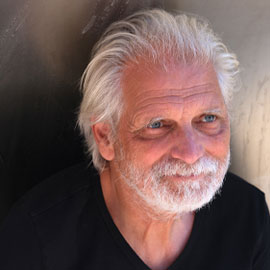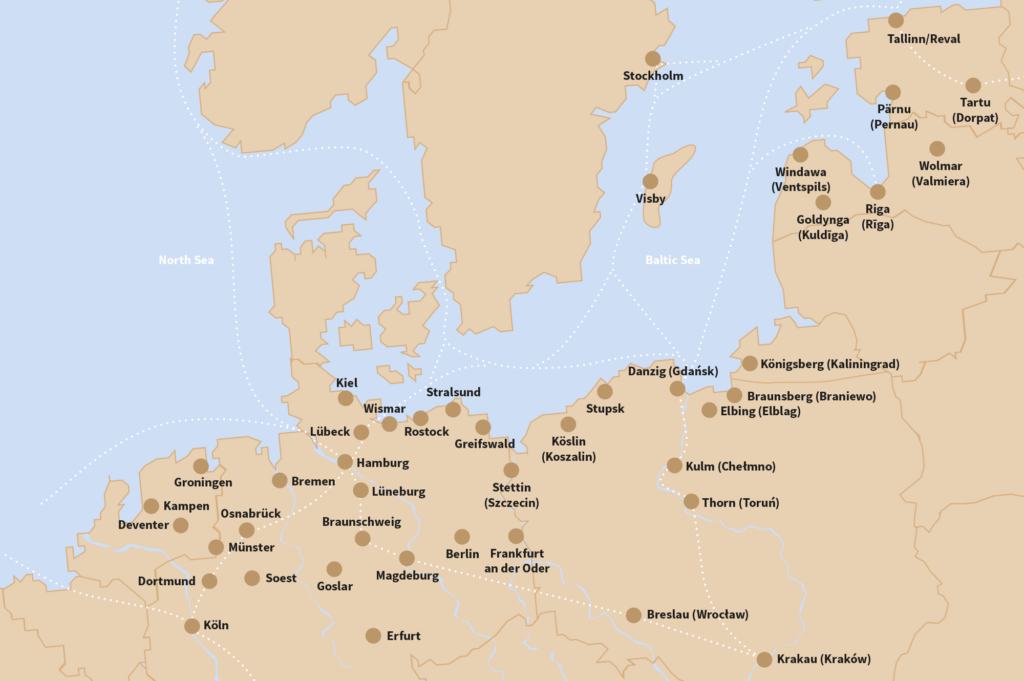Find a complete overview of all of the Hanseatic city locations here:
The Sound of the Hanse
With Lübeck at the forefront, the Hanseatic cities in Northern Europe were centres of economic power, trade, and middle-class prosperity. Likewise, the Hanseatic League enabled a rich and flourishing culture, including a thriving music scene. The goal of the European Hanseatic Ensemble is to rediscover the vast musical heritage of this region in the years around 1600, and to revive it for today’s generations through concert performances. The project is coordinated in the European Hansemuseum in Lübeck.
The project “European Hanseatic Ensemble” was established in 2019, and is aimed at talented young musicians under the age of 32 who study or have studied Early Music at a European conservatoire or university.

The European Hanseatic Ensemble is newly formed each year, consisting of musicians that particularly excelled in the masterclass of the previous year. The ensemble then performs newly developed programmes on concert tours through numerous Hanseatic cities across Europe. The concerts with participants of the masterclasses of 2024 are scheduled to take place in summer and autumn of 2025.
Exploring music from the composers who worked in the Hanseatic cities, the project shines new light on repertoire which has been largely forgotten by today’s concert scene – unjustly so! For there are striking compositions of various genres popular around 1600 that survived, including motets in the style of classical vocal polyphony, multi-choir works in the Venetian style, as well as pieces in the concertante style of the early baroque era. You can find numerous samples on the right.
As part of the special EU-funded project Young Talents for Hanseatic Music (YTHM), the ensemble’s activities focus on the integration of large organ instruments into vocal-instrumental ensemble music from around 1600. In cooperation with our partners, the International Gothenburg Organ Academy and the Foundation Groningen Orgelstad, the ensemble has the opportunity to rehearse and perform with large organs of historical construction.

Artistic direction of the ensemble resides in the expert hands of Manfred Cordes, an internationally renowned specialist in European music of the 16th and 17th century, long-standing professor for Early Music at the University of the Arts in Bremen, and conductor of the Ensemble Weser-Renaissance Bremen.
The Hanseatic Ensemble is also closely affiliated with the European Hansemuseum, within which the ensemble has found its ideal home where the 800 year-history of the Hanseatic League can be traced closely. The Hansemuseum offers a combination of staged historical scenes, valuable original artefacts, and interactive features, all of which provide informative and fascinating insights into the cultural and urban development of the Hanseatic League. Participants of the masterclass have the opportunity to visit museum during their time in Lübeck, where they can gain a valuable insights into the history of the Hanseatic League, the era that they are exploring in their music.
A selection of the more than 200 Hanseatic cities:
Music samples from the Hanseatic cities
CD productions, courtesy of Ensemble Weser-Renaissance Bremen
Andreas Hakenberger (1574 – 1627), Gdansk
Beati omnes, qui timent Dominum
Johann Stobäus (1580 – 1646), Königsberg
Du bist meine Zuversicht
Johann Steffens (1560 – 1616), Lüneburg
Paduane & Gaillard
Julius Johannes Weiland (1605 – 1663), Bremen
Laudate Dominum
Philipp Dulichius (1562 – 1631), Szczecin
Anni nostrae sicut arenea
Hieronymus Praetorius (1560 – 1629), Hamburg
Cantate Dominum
Thomas Selle (1599 – 1663), Hamburg
Christ ist erstanden
Jacob Praetorius (1586 – 1651), Hamburg
Gaudete omnes
Johannes Eccard (1553 – 1611), Gdansk
Lasst uns singen
Johann Vierdanck (1605 – 1646), Stralsund / Greifswald
Ich freue mich

